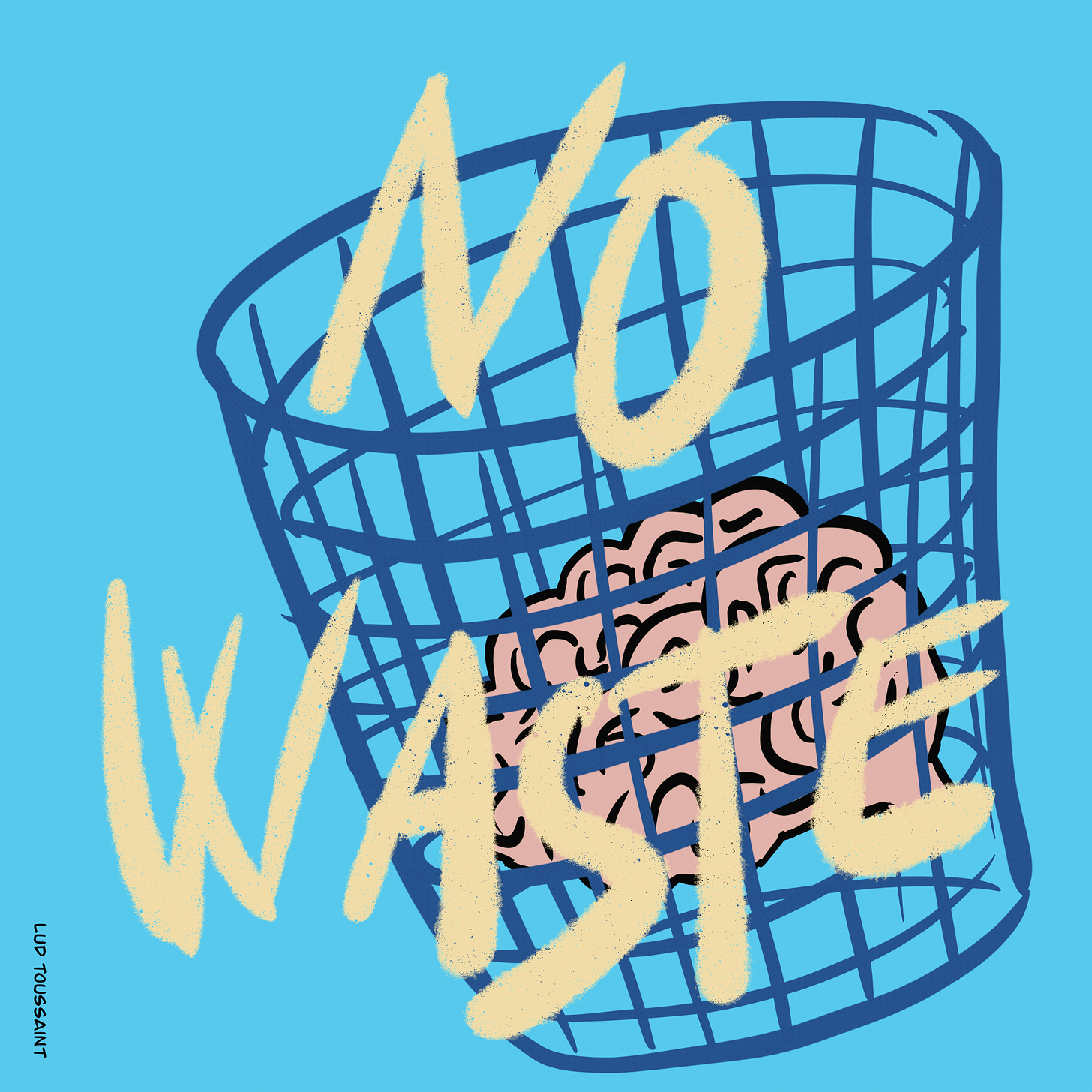No Brain Left Behind: Our Systems Need An Upgrade!
Visual summary for "Hidden Potential" - Part III (Final)
1,180 words | Around 5.5-minute read
Hello, welcome!
This is it. The last part of the visual summary of the book "Hidden Potential".
It has been a good challenge for me to come up with visuals and animations to cover the full book in just a month. I have loved reading it and I'm already trying to apply some of the learnings. Definitely recommended.
Now let's jump in!
The Game Plan
In the previous post, Part II focused on Structures for Motivation. Today, we move to Part III, where Adam Grant explores how Systems of Opportunity shape our growth and potential. The right support, environment, and social structures can make all the difference in unlocking hidden potential.
You can find the past posts below:
Hidden Potential - Content
✅ Part I: Skills of Character (Check it here)
✅Chapter 1: Creatures of Discomfort
✅Chapter 2: Human Sponges
✅Chapter 3: The Imperfectionists
✅ Part II: Structures for Motivation (Check it here)
✅Chapter 4: Transforming the Daily Grind
✅Chapter 5: Getting Unstuck
✅Chapter 6: Defying Gravity
📍 Part III: Systems of Opportunity (Current)
📍Chapter 7: Every Child Gets Ahead
📍Chapter 8: Mining for Gold
📍Chapter 9: Diamonds in the Rough
Part III: Systems of Opportunity
In the first two parts, Adam Grant focused on individuals and small groups, showing how developing “Character Skills” and using guides & mentors as “Scaffolding” can let bloom the seed of potential; but if we take a step back and look at a societal level, it is clear that another element plays a crucial role: Opportunity.
The quality of the system will determine who is given the opportunity to pursue their dreams and who is being denied access.
math whizzes from low-income families were no more likely to become inventors than affluent kids who scored below average on the same math tests.
Good systems should [..] open doors for people who don’t grow up with means.
Adam Grant in this part explores how good systems can help countries, organizations and communities break down barriers and create pathways for people to thrive even without a wealthy background or a perfect track record.
1. Every Child Gets Ahead
A good Education System
Culture = Practices, Values & Underlying Assumptions
In Finland, the saying "We can't afford to waste a brain" demonstrates their particular education culture:
We believe 🧱 All students have potential (underlying assumption)
We want to 💗 Achieve equality (value)
We give to 🧑🏫 All students top teachers, support, and attention (practice)
This sharply contrasts with the U.S., where the value is achieving excellence and the underlying assumption is that only some children have potential.
Finland consistently ranks at the top of PISA, a standardized test evaluating teenagers' abilities in science, math, and reading.
Adam Grant highlights key aspects that lead to their education success:
Teachers are highly educated and continue their professional development
Teachers earn competitive salaries and have flexibility with the programs
Teachers remain with students for multiple years
Each child receives an individualized learning plan and free tutoring
The focus is on encouraging a love of learning through play and regular breaks
The goal is for all students to exceed expectations
And a fun fact, in Finland, each newborn receives a bag of books!
Building schools where students achieve greater things isn't about focusing on a select few and pushing them to excel. It's about fostering a culture that allows all students to grow intellectually and thrive emotionally.
2. Mining for Gold
Another aspect of shifting focus from individuals to groups is considering how to "Maximize group intelligence".
A Prosocial Leader
The best teams aren't those filled with geniuses, but ones able to align on common goals and bring out the best from each member. This requires a specific type of leadership:
"Leaders that put people first"
Though this sounds obvious, research shows that overly talkative and highly narcissistic individuals are more likely to be selected as leaders.
Extroversion is more common in leadership, but its effectiveness depends on the team type:
Reactive teams benefit from extroverted leaders
Proactive teams perform better with introverted leaders
With a team of sponges the best leader is not the person who talks the most but the one who listen the best
From Brainstorming to Brainwriting
Brainstorming is a common practice used to gather collective intelligence, but if done as a group from the start, it actually doesn't work:
The loudest voices dominate
People fear appearing stupid
Conformity pressure inhibits creativity
A better approach is called brainwriting:
Collect ideas individually
Evaluate them individually
Come together to select & refine the most promising ideas
A System that avoid Gatekeepers
Another important aspect of ensuring the best ideas are heard and implemented is to build a 'Lattice System':
In a Ladder system, one gatekeeper can shut an idea down
In a Lattice system, finding one willing leader can be enough to elevate an idea to the top
An example from the book illustrates how a 24 year old engineer -one of the least experienced on the team- found the solution that saved the Chilean miners trapped after an avalanche.
Despite his junior status, he navigated alternative channels to pitch his idea. Initially implemented only as a backup plan, his solution ultimately became the one that successfully rescued the miners!
Great leaders build systems to amplify voices and elevate messengers
3. Diamonds in the Rough
It's a mistake to judge people solely by the height they have reached [...] we miss out on people whose achievements have involved overcoming major obstacles.
When it comes to selecting candidates, Adam points out flaws in the current paradigm. Studies show that:
Prior work experience has ZERO influence on performance
A higher-ranking university has only minimal impact (e.g., 1.9 better on consulting projects)
Past performance predicts success only if the job requires similar skills to previous ones
The stress introduced by traditional interviews prevents seeing a candidate's true potential
The major missing piece, according to Grant, is considering how far people have come or the level of difficulty they've overcome.
In that, affirmative action is not a solution, as:
People wonder if they truly earned their place
Group hardship doesn't capture all the difficulties individuals have endured
Instead, Grant highlights potential solutions:
🖼️ Contextualizing performance (e.g., showing student grades compared to their neighborhood)
📈 Looking at the rate of improvement
🛋️ Providing comfortable spaces for candidates to show their passion
🔴 Creating real-time work samples (letting them demonstrate what they can do)
When we evaluate people, there is nothing more rewarding than finding a diamond in the rough. Our job isn’t to apply pressure that brings out their brilliance. It’s to make sure we don’t overlook those who have already faced that pressure - and recognize their potential to shine
Conclusion
Throughout Part III of "Hidden Potential," Adam Grant provides a compelling argument that opening opportunity is key for good systems:
🎓 Every child deserves a personalized education, helping where they struggle
🧠 Collective intelligence requires prosocial skills to join individual strengths
🔍 Organizations must look beyond traditional approaches to find hidden talent
We are not just products of our own efforts; we are shaped by the systems around us. By creating better opportunities, we unlock everyone's potential.
What part resonated the most with you? Do you see some spaces where you can help build better systems?
With this, we have completed our journey through "Hidden Potential"!
Thank you so much for being a part of this! Do you have a book to suggest for us to explore next? Let me know in the comments.












This series has been *chef’s kiss* fantastic!! I’m going to buy and read the book. Thank you for sharing, Lud!
I really have got to read this book! 📕 Hope you're having a fabulous weekend Lud.